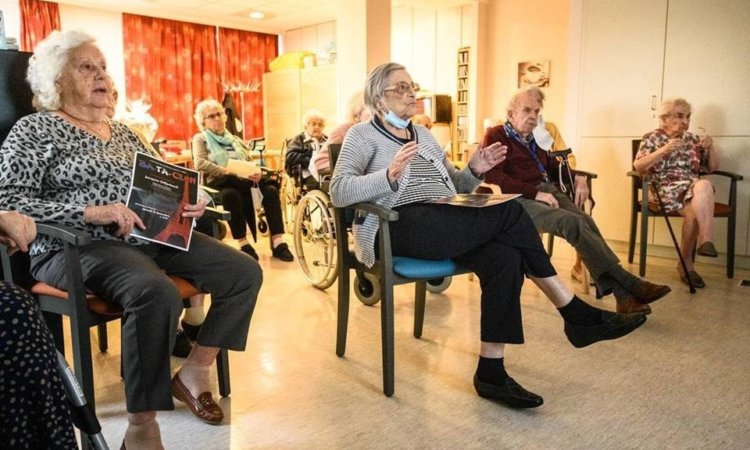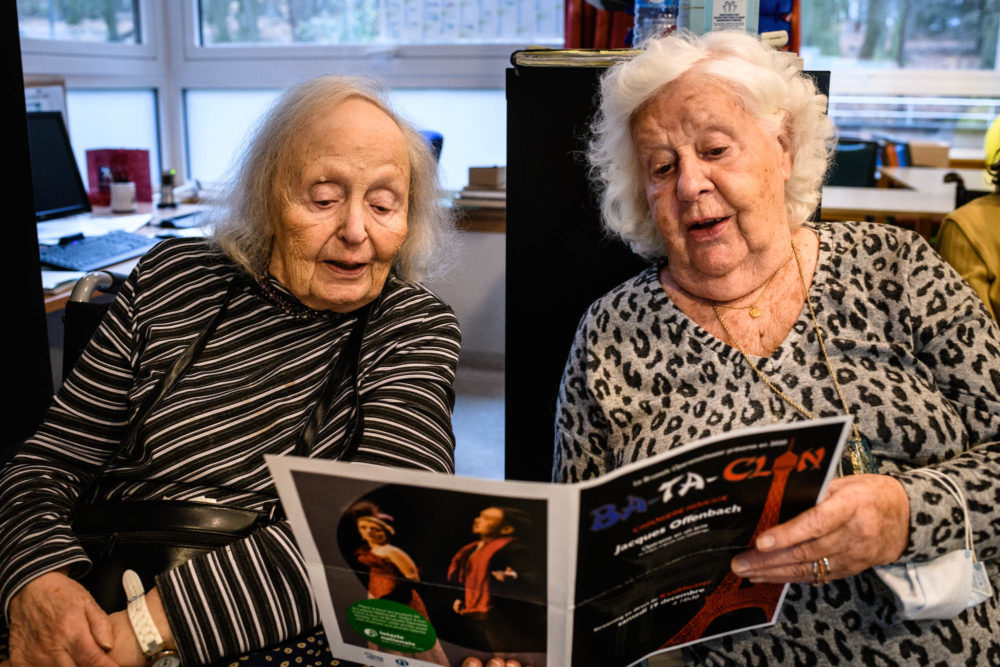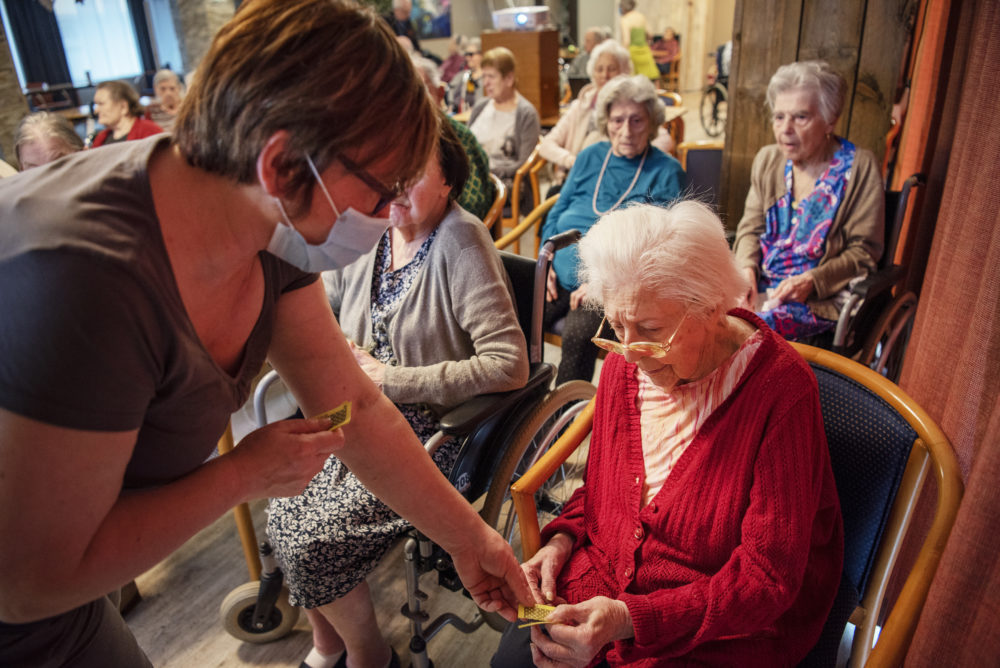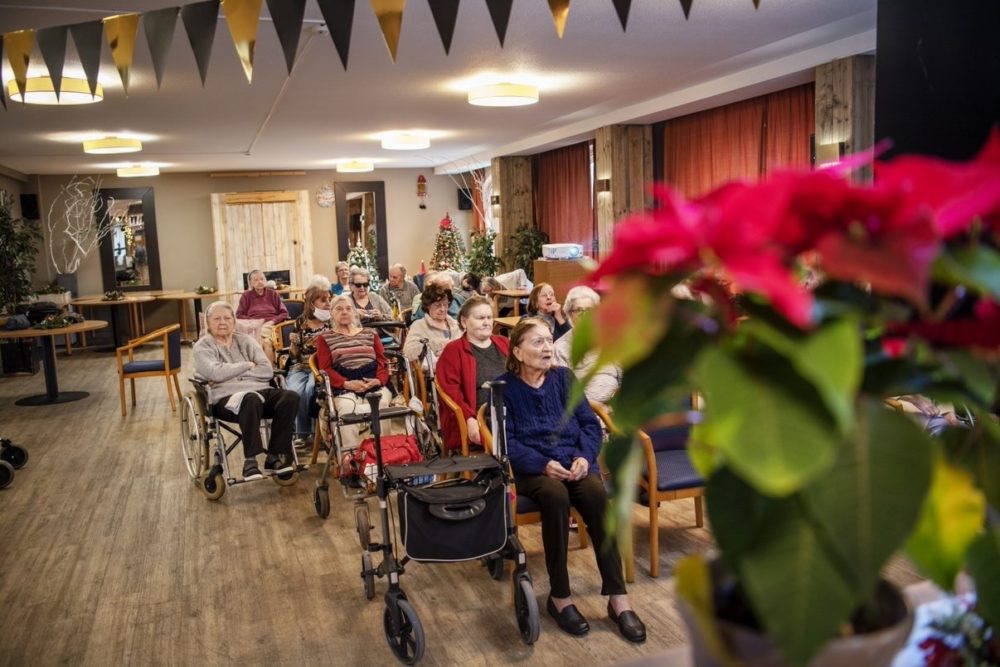
Working with hard-to-reach adults: VGC
Beatriz Klewais
This series of articles focuses on initiatives that lower the threshold for hard-to-reach groups of adults. Beatriz (Lasso) spoke with Isabelle De Meyere of the Flemish Community Commission (VGC) about their livestreaming project in Brussels’ residential care centres. With this interview, Isabelle hopes to encourage new partners to join this digital adventure and inspire the cultural sector to make even more use of this medium and build bridges with the social and welfare sector.
Digitally accessible culture for a less mobile audience
Isabelle De Meyere is cultural policy coordinator at the VGC. In addition to bringing together and supporting Dutch-language cultural services in Brussels, she also monitors projects, including the 'Livestreaming for a less mobile audience' project. Based on the conviction that everyone has the right to high-quality culture, she works with the Brussels Elderly Platform (BOp) and the 22 Brussels community centres to bring the world of culture to a less mobile audience.

At the moment, the focus is on collaborations with residential care centres and local service centres, but Isabelle sees a lot of growth potential. According to her, there is still enormous potential in hospitals, rehabilitation centres, youth institutions, prisons, etc.
With this pilot project, we want to grow and learn first, before we expand. But in the future, we hope to be able to bring culture to as many people as possible who are unable to travel to our cultural centres.
- Isabelle
A project tailored to the target group
It may sound simple, but showing a live stream in a residential care centre requires a lot of preparatory work. Such organisations often do not have the necessary equipment or digital knowledge to organise this independently. That is why Isabelle closely supervises each request in order to provide tailor-made support. This ranges from going over the technical specifications and the script together to arranging for a technician to come and install an Ethernet cable on site. Thanks to the network of 22 community centres in Brussels, this runs smoothly.
There is also a lot to do on the day of the screening. Occupational therapists work (often understaffed) within a tight daily schedule and unforeseen circumstances regularly arise. Whether a screening can go ahead hangs by a thread. It is therefore crucial to involve the occupational therapists in the planning of this activity. Where possible, the VGC tries to provide a recording of the performance as a back-up. This means that in the event of a last-minute cancellation, the performance can still be viewed with the residents at a later date.

Within the project, great importance is also attached to a live experience. And that goes much further than just livestreaming a performance, i.e. broadcasting it at the moment it is being performed. Posters, flyers, tickets and programme booklets are provided in advance. Efforts are also made to decorate the screening room and provide appropriate atmospheric lighting. Just like when you attend a performance in a theatre, you can see the audience arrive live on the big screen and leave the theatre at the end. This makes the residents feel even more part of the experience. Isabelle sees great potential in this framework for community centres. Until recently, they had the space to do this because many programmes had been cancelled due to the pandemic, but today, many are focusing on their regular activities again. The question remains whether public workers see this target group as a fully-fledged audience and whether they have the space to invest time and resources in this.
To me, there’s sometimes an outdated way of thinking in a world with so many digital possibilities, when you are working with people who are cut off from the outside world.
- Isabelle
Barriers and points for attention
The project remains a learning process in which much has already been learned. We now double-check all applications. Ninety percent of people who indicate that they do not need technical support ultimately do. That is an important point for attention. We have also noticed that there are still many structural problems in residential care centres. For example, internet modems are not yet seen everywhere as a necessity and are often located far away in the management office. In one residential care centre, it turned out that the internet connection had been switched off by the local council at the weekend because no one from the administration was working then.
In terms of population, residential care centres reflect the rest of society. Here, too, you find people from all walks of life, with different cultural backgrounds and artistic preferences. By asking them and the staff about their needs, the programme is adapted accordingly. For example, they offer classical music and opera, as well as sing-alongs and more accessible options. From the outset, there has been a focus on offering a bilingual programme. The programming itself is another challenge. For example, the French-speaking residents of residential care centres are not familiar with Will Tura. In some cases, subtitles can be a solution.

In general, it remains difficult to establish contact with residential care centres. It takes a lot of time to build up a network and establish new contacts. Fortunately, Isabelle can count on the BOp network, and on a number of community centres that worked with residential care homes in the past. Local service centres and local cultural policy coordinators also often have valuable contacts. If you combine all this knowledge and trust, you can go a long way. In addition, Isabelle is also trying to strengthen ties with Iriscare to support them in this, as they are in direct daily contact with residential care centres.
Residential care centres reflect the rest of society. Here, too, you find people from all walks of life, with different cultural backgrounds and artistic preferences.
And now what?
There are no fewer than 137 residential care centres in Brussels, not all of which are reached by local community centres. In addition, these centres have not yet built up much expertise in (live) streaming, and the Brussels offering in this area is fairly limited during the day. So there is a gap in the market that can still be filled, for which Isabelle would like to appeal to the cultural sector. She calls on cultural institutions to think along with her about digital culture and to further expand their expertise in this area and use it for a less mobile audience. She naturally sees this offering as complementary to the already extensive analogue offering.
The responses and evaluations showed that the fact that this group was being considered was greatly appreciated. There are many residents with dementia in nursing homes, but many are aware of what is happening to them, especially in the early stages of the disease. They realise that they have reached their 'final destination', which is very confronting. You can sense that anything that can lower the threshold between inside and outside the residential care centre is greatly appreciated. That is also why we want to continue: people are begging for it. They need that connection with the outside world: it breaks up the daily routine and brings quality into their lives. And who brings quality? Of course, beautiful things are made and done with residents, but it is also a reality that they tinker with toilet rolls... Music could play a much greater role in residential care homes.

